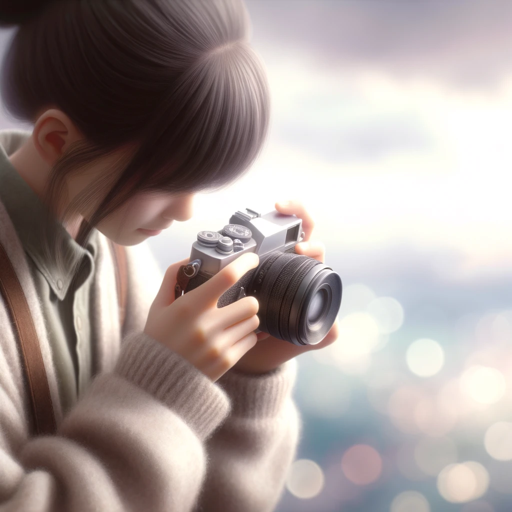Realistic Kanto Photos-realistic Kanto creature photos
AI-powered realistic Kanto creature images
Eevee
Gastly
Magnemite
Ditto
Related Tools
Load More
Photo Realistic
Photo Realistic Picture Creator.

Realistic Photos for Mid-J
A guide for crafting detailed Midjourney prompts

Foto Realista
Crea imágenes realistas

Photo Real
Expert in crafting detailed, realistic image prompts

Real Image GenE
Generates lifelike stock, style, and animal photos.

GeoGuesserGPT
Upload a picture and I'll analyze it better than any GeoGuesser Expert, crafting a clever guess to reveal where it was taken. Try GeoGuesserGPT and I'll pinpoint the spot with surprising insight!
20.0 / 5 (200 votes)
Introduction to Realistic Kanto Photos
Realistic Kanto Photos is a service designed to provide hyper-realistic wildlife photographs of creatures inspired by the Pokémon universe. The primary aim is to reimagine these fantastical beings as if they were real, living animals, captured in natural settings with the fidelity of high-end wildlife photography. By combining detailed knowledge of each creature's design with advanced photo-realistic rendering techniques, Realistic Kanto Photos brings a unique blend of fantasy and reality to life. For instance, a Bulbasaur is depicted as 'Phytosauria bulbisaurus,' a small, quadruped dinosaur-like animal with a plant bulb on its back, situated in a dense forest.

Main Functions of Realistic Kanto Photos
Hyper-Realistic Wildlife Photography
Example
Creating a detailed, life-like image of a Charizard ('Draconis flammara') as a massive, dragon-like creature with fiery breath, captured in a mountainous, volcanic region.
Scenario
Used in an educational context to illustrate what these fantastical creatures might look like in a real-world environment, enhancing learning and engagement.
Customizable Creature Depictions
Example
Adjusting a Pikachu ('Rodentia electrica') to appear in different settings, such as urban environments or lush forests, based on user preferences.
Scenario
Ideal for personalized merchandise or artwork, where fans can see their favorite creatures in various imaginative real-world scenarios.
Evolutionary Illustrations
Example
Depicting the evolutionary stages of a Squirtle ('Testudinis aquapulsi') to a Blastoise ('Testudinis aquatyranni'), showing the growth and adaptation in their natural habitats.
Scenario
Useful for storytelling in books, games, or animations, providing a visual narrative of a creature's lifecycle and development.
Ideal Users of Realistic Kanto Photos
Educators and Students
Educators and students in biology, zoology, and environmental sciences can benefit from realistic depictions of these creatures to inspire curiosity and provide a creative tool for learning about evolution, adaptation, and habitats.
Artists and Content Creators
Artists, writers, and content creators who seek to incorporate fantastical elements into their work can use these images to add a touch of realism to their creations, making their stories more immersive and visually appealing.

How to Use Realistic Kanto Photos
Step 1
Visit aichatonline.org for a free trial without login, also no need for ChatGPT Plus.
Step 2
Explore the gallery and select the Kanto creatures you want to see in a realistic depiction.
Step 3
Customize your chosen creature by specifying features such as habitat, pose, and lighting.
Step 4
Generate the image using the AI-powered tool, ensuring you review and adjust settings as needed.
Step 5
Download the high-resolution image or share it directly via social media or other platforms.
Try other advanced and practical GPTs
Video Game Character Creator
AI-powered character creation tool
美少女アニメ画像生成器!(妹Ver)
Create custom anime girls with AI

SNSアニメ調猫耳キャライラスト生成メーカー
Create Custom Anime Cat-Eared Characters Instantly

アニメ風水彩画伯
AI-powered anime watercolor illustrations

Mr. Smith's AP Economics AI Assistant
AI-Powered Study Guide for AP Economics.

Brave Notes
AI-powered notes for therapy sessions

PIXWORDER - Batch keywording for stock photos
AI-powered metadata generation for stock photos
Video Creator from Photos
AI-Powered Video Creation from Photos

Candid Chat
AI-powered, blunt and direct advice.

神ブログ作成ツール
AI-Powered Blog Content Creation Tool

ブログ(コラム)作成GPT
AI-Powered Blog Content Creation

Homework Helper
AI-powered learning support for maths and science.

- Academic Writing
- Social Media
- Creative Projects
- Educational Materials
- Personal Collections
Frequently Asked Questions about Realistic Kanto Photos
What is Realistic Kanto Photos?
Realistic Kanto Photos is an AI-powered tool that generates hyper-realistic images of Kanto region creatures, depicting them as real-life animals in natural habitats.
Do I need to create an account to use the tool?
No, you can access a free trial at aichatonline.org without needing to log in or subscribe to ChatGPT Plus.
Can I customize the images?
Yes, you can customize various aspects such as the creature's habitat, pose, and lighting to create a unique and realistic depiction.
What formats are the images available in?
The generated images are available in high-resolution formats suitable for downloading, sharing, or printing.
What are common uses for Realistic Kanto Photos?
Common uses include academic research, creative projects, educational materials, social media content, and personal collections.